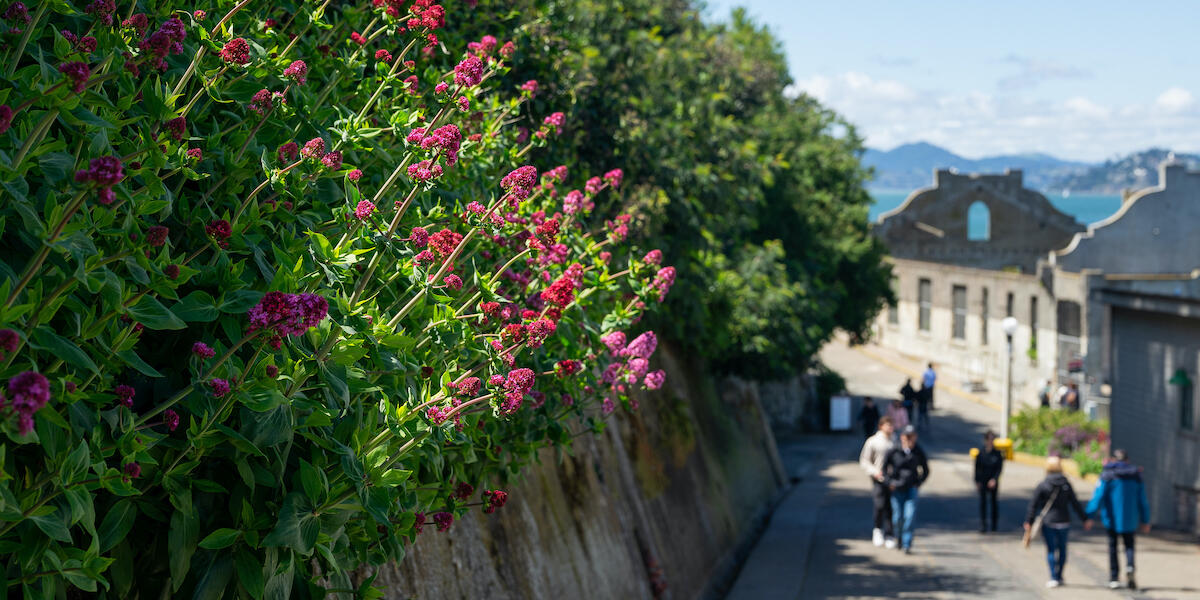Your parks need you now
Your support helps fight climate change and promote park sustainability—please give now.

Alcatraz gardeners needed tough plants that could survive with little water or care. The first ornamental plants that arrived to Alcatraz in the mid 1860s were typically favorite garden plants brought by soldier's families that called Alcatraz home. These plants were Victorian in fashion - roses and vines trained on fences, lilies, and bulbs were arranged in well kept garden beds. Garden styles had changed by the 1930s, when the Federal Bureau of Prisons took over the island. The warden’s secretary, Fred Reichel, asked the California Horticultural Society and pioneering western plant breeders for seedlings that might do well on the island. Many of the species that he imported came from the world’s other wet winter/dry summer climates, and flourished through 40 years of neglect after the prison closed. About 10 rose species survived without care from the prison periods. Learn more about Alcatraz Island's roses.
Today, visitors to Alcatraz find a landscape alive with fragrant old roses, fig trees, bulbs, and colorful succulents—historic examples of sustainable planting. Where historic plantings were lost, visitors now see new plants with low maintenance and water needs more appropriate to today’s conditions. These substitute plants, brought into the gardens starting in 2005, are similar in type, form, scale, and color to the plants in historic photographs.
See a list of survivor plants on Alcatraz Island.
Your support helps fight climate change and promote park sustainability—please give now.